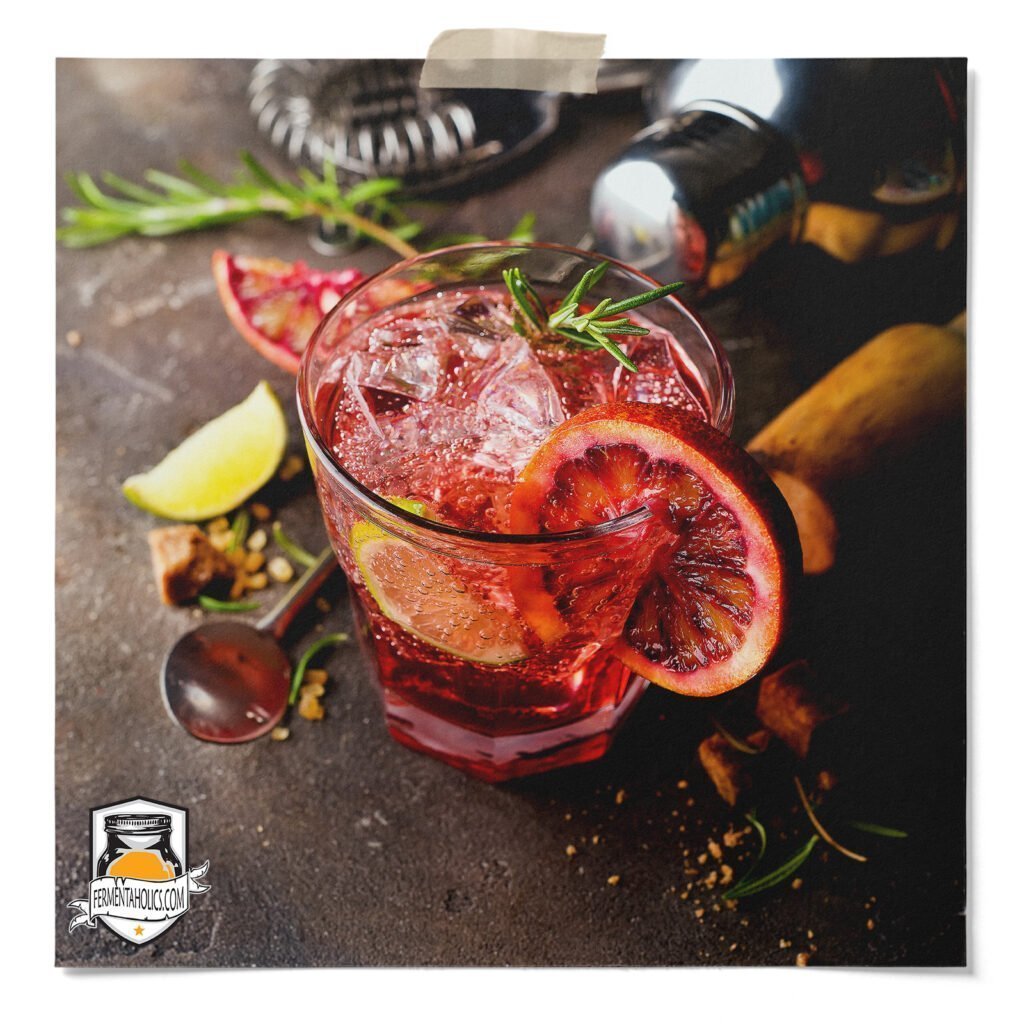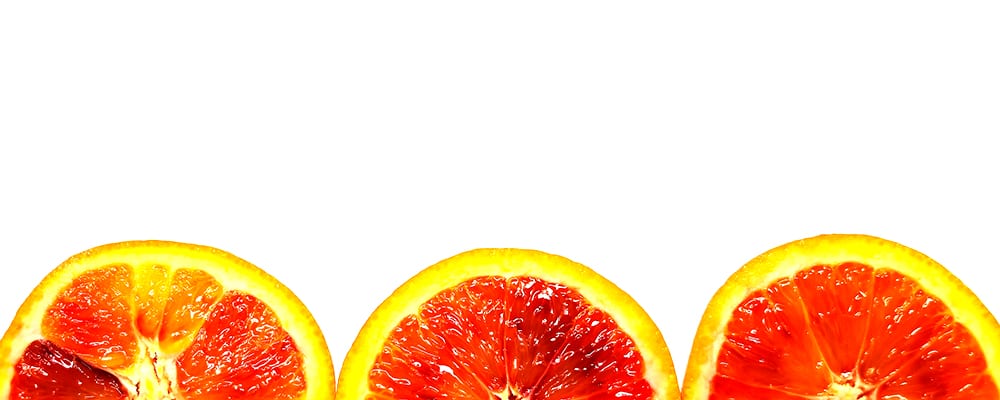

Tart, fruity and just two ingredients… what’s not to love about that? Anything in the citrus family pairs really well with kombucha, and blood orange is no exception. Blood oranges have unique floral notes and tartness that build on rose hips’ fruity and floral flavor. However, if you can’t find blood oranges, you can substitute any citrus you have on hand: grapefruit, lime, lemon, oranges.
The amounts suggested in the recipe are a starting point, but there are no rules. Add as much or as little juice as you want. The more juice (sugar) you add, the more likely you will have a carbonated end product. Other ideas that would pair well with this combination are ginger, hibiscus, lavender, fresh herbs (basil, mint, sage), vanilla, etc!
To serve: Strain the kombucha over a fresh glass of ice, garnish with a blood orange slice and enjoy!
It’s important to note that making homemade kombucha is almost always a two-step fermentation process. Brewing kombucha is only a one-step process for those who prefer an unflavored flat kombucha. Otherwise, the steps consist of a primary fermentation and a secondary fermentation.
The primary fermentation is the first step of the kombucha brewing process. This is where your SCOBY transforms regular sweet tea into the tart and slightly sweet kombucha we love. At the end of this stage, you will have finished kombucha, but it will be flat and unflavored. Have you skipped this step? Then check out our guide on making kombucha at home or our guide on making jun kombucha at home. Traditional kombucha is going to yield a bolder brew, while jun kombucha is milder and a bit more tart.
The secondary fermentation is the step where you bottle, carbonate, and flavor your kombucha by the addition of sugar and flavors. This step is essentially adding a bit of sugar/flavor to each airtight bottle and letting it ferment a little longer, allowing the yeast to carbonate the beverage in an airtight environment naturally. How exactly does this happen? See our post on kombucha secondary fermentation here.
💡Since this recipe is for the secondary fermentation, to make this recipe, you’ll need to have kombucha that has finished the primary fermentation and is ready to bottle.
This recipe makes one 16-fluid-ounce bottle. A 1-gallon batch of kombucha will make seven 16-ounce bottles, so for one gallon, you will need to multiply the ingredients by 7. Before beginning this recipe, you will need to:
16 FL Oz Bottles
10
minutes1-3
DaysThis Blood Orange Rose Hip Kombucha recipe is for one 16 fluid ounce bottle. For a gallon batch, make seven bottles. To scale this recipe to a gallon batch, multiply the ingredients by seven or toggle the serving size up to seven above. Before bottling your kombucha, remove the SCOBY pellicle along with 12-16 ounces of kombucha starter tea from your brew, and reserve for your next batch.
16 fl oz Kombucha from a completed primary fermentation
2-4 fl oz Blood Orange Juice
1 tbsp Rose Hips
1 16 fl oz Kombucha Bottle(s)
Cut the blood oranges in half and squeeze the juice into the bottles using a funnel.
Add the rose hips to each bottle and then fill with kombucha, leaving about an inch of headspace.
Be sure to leave yourself enough kombucha to use as your starter for the next batch, about 1.5 cups per gallon.
Tightly place the caps on each bottle.
Keep bottles at room temperature for 1-3 days, depending on temperature this may take longer.
Once per day, you’ll want to “burp” the bottles by opening the cap to allow built-up pressure to escape and then place the lid immediately back on. Use this step as a gauge to see how much pressure is building. If there’s not much when you burp it, allow a few days in between.
When you are happy with the flavor and fizziness of your kombucha (1-3 days), place bottles in the fridge to chill and halt the fermentation.
To serve: Strain the kombucha over a fresh glass of ice, garnish with a blood orange slice and enjoy!
